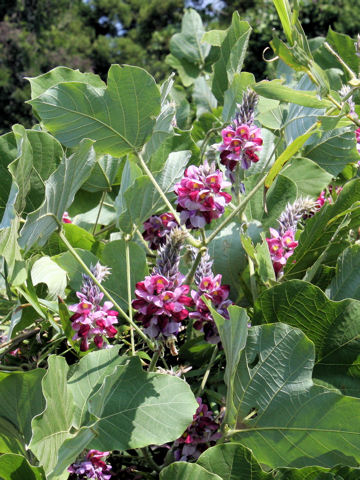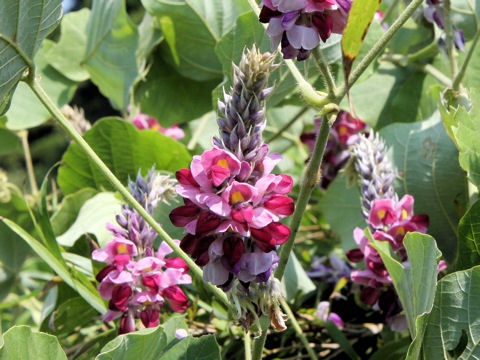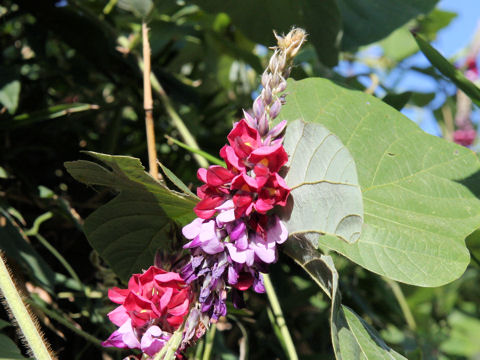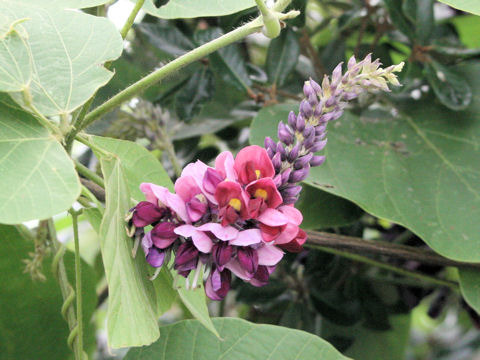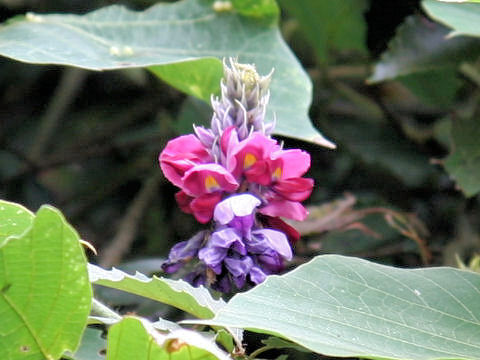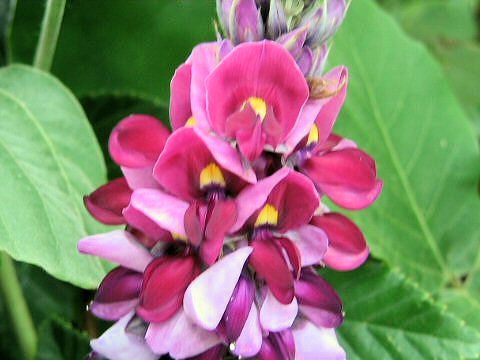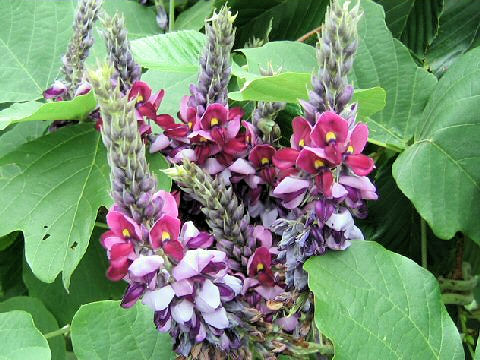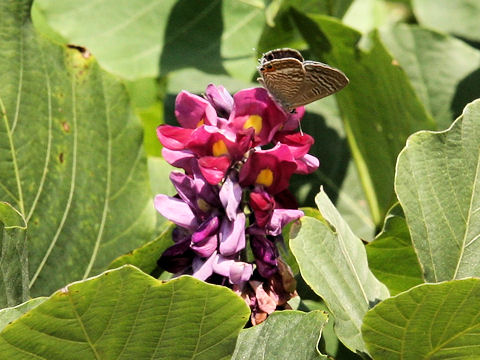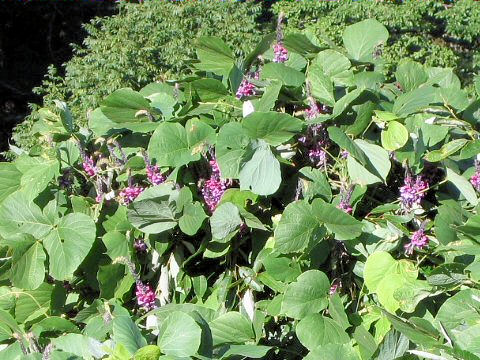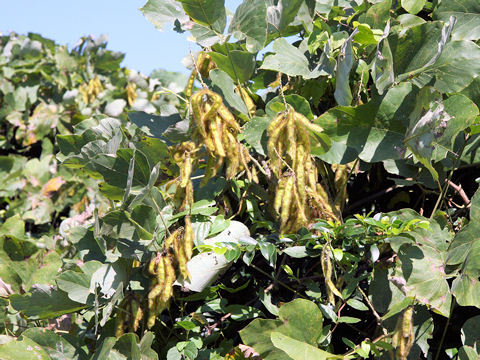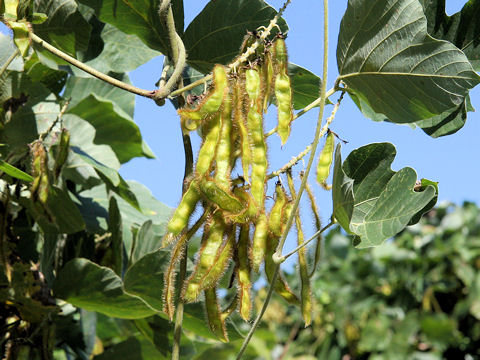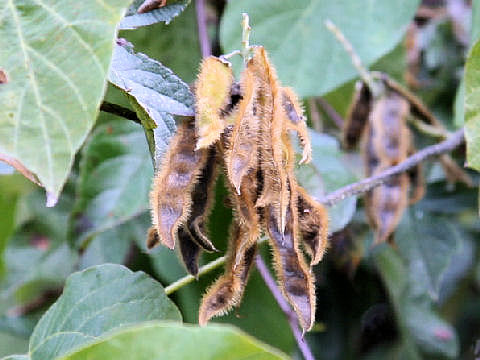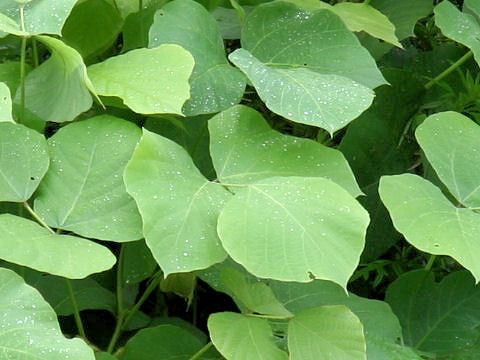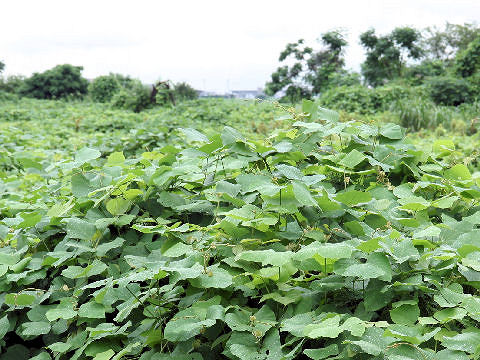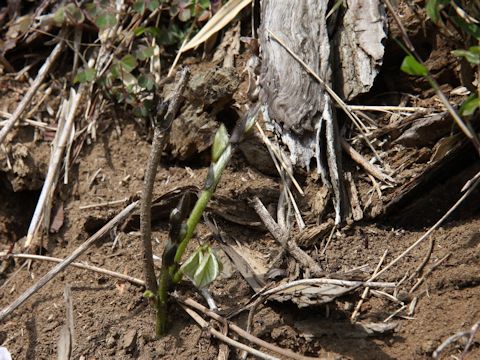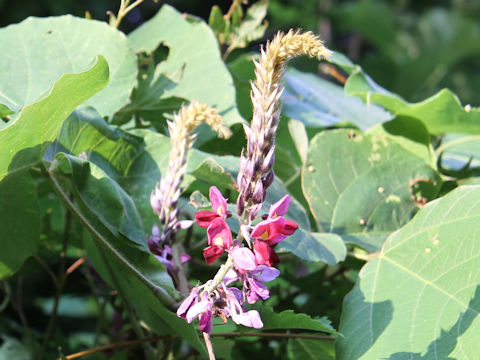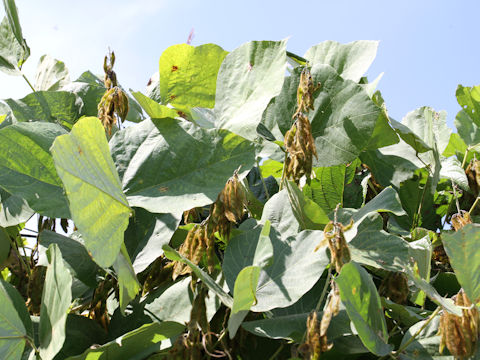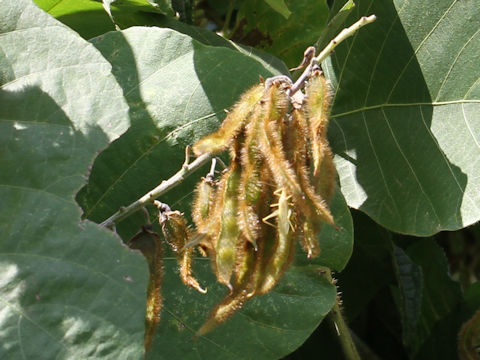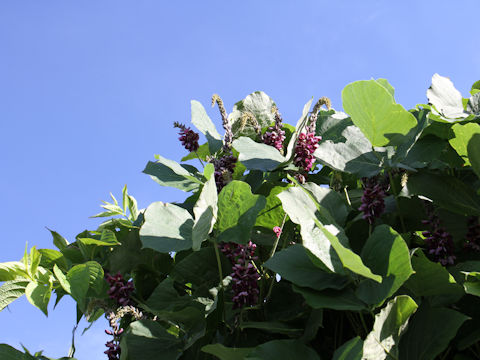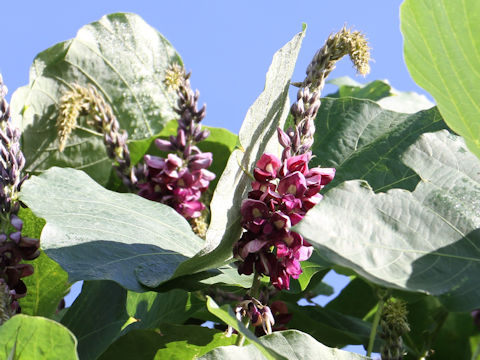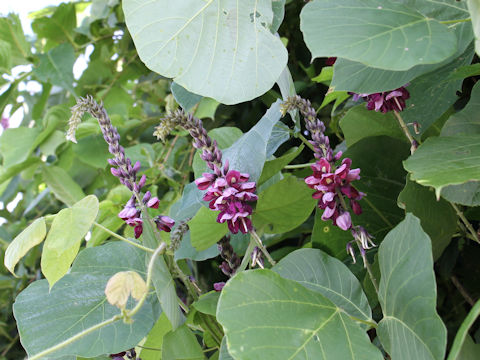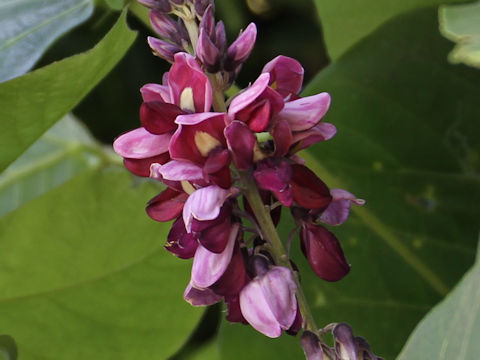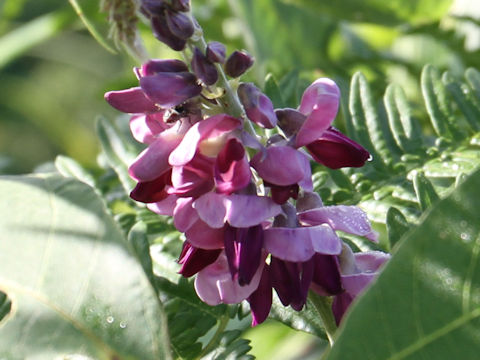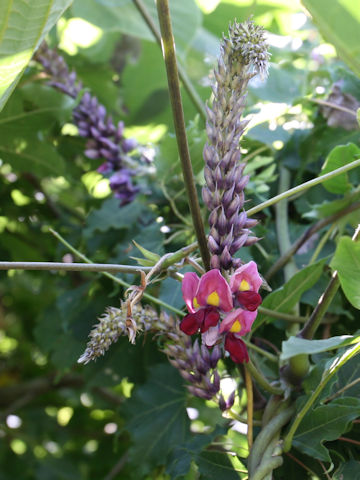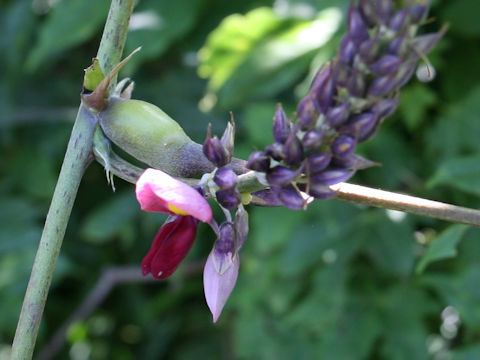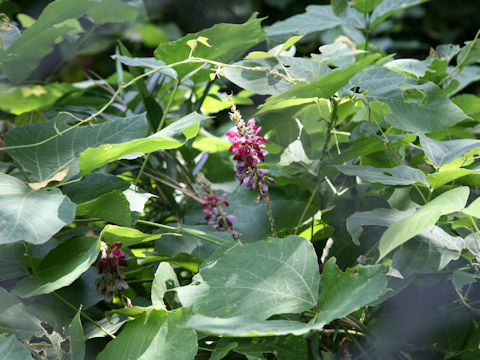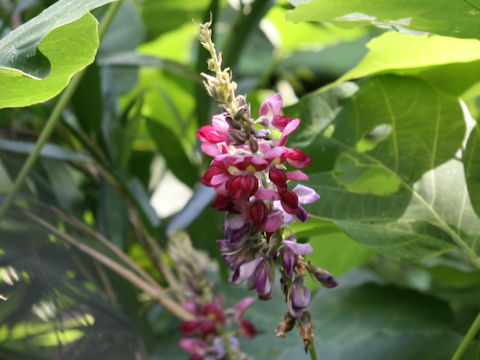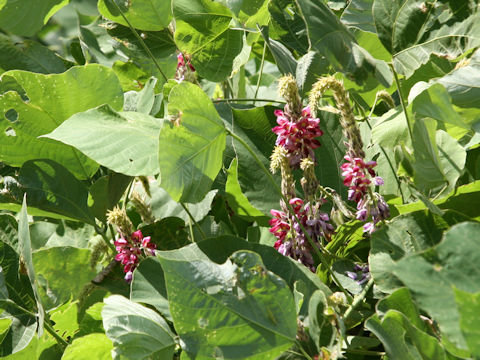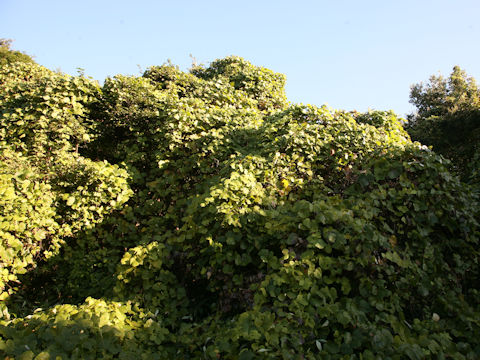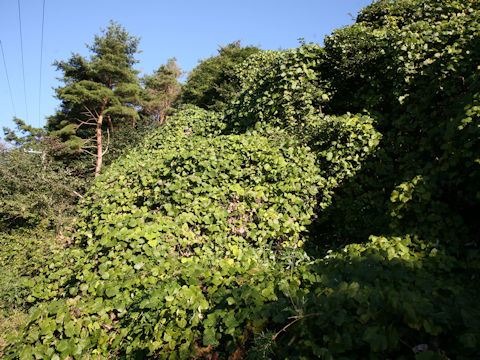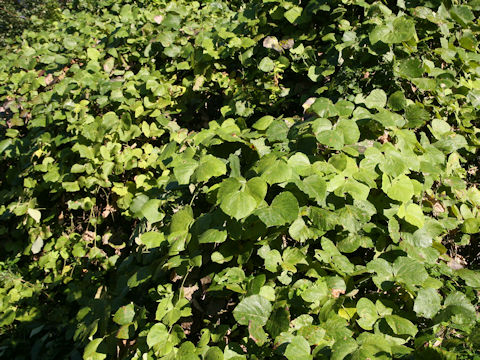
|
|
|
|
−− もっと見る(Show more)−−
−− 閉じる(Close) −−
|
|
|
|
わが国の各地をはじめ、台湾や朝鮮半島、中国、フィリピン、オーストラリアに分布しています。現在では、北アメリカやインド、アフリカにも帰化しています。山野にふつうに生え、蔓の長さは10メートル以上になります。ほかの樹木などに絡みついて繁茂します。葉は3出複葉です。7月から9月ごろ、葉腋から総状花序をだし、紅紫色の蝶形花を咲かせます。和名は「くずかずら(国栖葛)」の略称で、奈良県吉野地方にある国栖(くず)の人々が葛粉を作って売り歩いたことに由来します。繊維は丈夫で撥水性があることから、葛布を作るときの材料とされます。また、根は葛根(かっこん)と呼ばれ、漢方薬として使われます。台湾華語では「大葛藤」、中国語では「葛麻姆(ge ma mu)」と呼ばれます。 アメリカでは「くず」は侵略的外来植物に指定され、その環境に壊滅的な影響を与えるものとされています。「南部を食い荒らすつる植物」という異名を持ちます。 |
|
|
マメ科クズ属の多年草で、学名は Pueraria lobata (syn. Pueraria lobata ssp. lobata、Pueraria montana var. lobata)。英名は Kudzu vine。 |
|
|
The Kudzu vine (Pueraria lobata) belongs to Fabaceae (the Pea family). It is a perennial herb that is native to Japan, as well as Taiwan, the Korean Peninsula, China, the Philippine and Australia. Today, it has naturalized in North America, India, and Africa. This herb grows in fields and mountains, and can reach up to 10 m long. It is climbing up other trees and produces a dense mantle. The leaves are trilobate. The racemes are borne on the axiles and the magenta papilionacenous flowers bloom from July to September. The Japanese name is an abbreviation for "Kuzu-kazura", which is derived from the fact that the people of Kuzu in the Yoshino region of Nara Prefecture made kudzu powder and sold it. Fiber is strong and water repellent, so it is used as a material for making kudzu cloth. The root is called "Kakkon" and is used as a Chinese herbal medicine. In Taiwanese Chinese, it is called "大葛藤", and in Chinese, it is called "葛麻姆" (ge ma mu). In the United States, "kudzu vine" is designated as an invasive plant species that has a devastating impact on the environment. It is also known as "the vine that ate the South". |
|
|
[上・中1] 千葉県香取市仁良にて、2010年09月11日撮影。 [中2] 同上にて、2010年09月02日撮影。 [中14] 同上にて、2013年04月01日撮影。 [中3] 茨城県神栖市土合北にて、2009年09月09日撮影。 [中4] 大阪府四條畷市逢阪「むろいけ園地」にて、2006年09月10日撮影。 [中5・中6] 大阪府四條畷市上田原にて、2004年09月11日撮影。 [中7] 大阪府交野市私市にて、2007年09月25日撮影。 [中8] 石川県吉野谷村中宮「かもしか滝」にて、2004年08月08日撮影。 [中9・中10] 愛知県豊橋市雲谷町にて、2007年10月05日撮影。 [中11] 長野県塩尻市片丘にて、2006年10月19日撮影。 [中12・中13] 大阪府枚方市磯島「淀川河岸」にて、2006年07月19日撮影。 [中15] 福島県天栄村湯本にて、2014年07月27日撮影。 [中16・中17] 山形県南陽市釜渡戸にて、2017年09月25日撮影。 [中18〜中22] 山形県小国町小玉川「樽口峠」にて、2018年08月19日撮影。 [中23・中24] 宮城県川崎町支倉にて、2021年07月17日撮影。 [中25〜中27] 宮城県仙台市泉区「将監風致公園」にて、2024年08月20日撮影。 [中28〜29・下] 宮城県村田町足立にて、2024年10月12日撮影。 |

|
|
Shu Suehiro |
